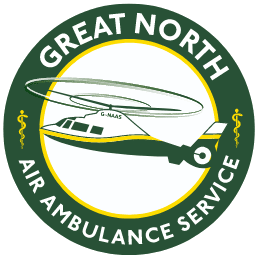The Great North Air Ambulance Service (GNAAS) was one of the first air ambulances in the country to carry doctors onboard its aircraft. But why are they needed?
At GNAAS, our onboard team is usually made up of a pilot, paramedic and a specialist doctor. In order to function in some of the most testing environments, they must operate as equals, drawing on each other’s experience and skills for the benefit of the patient.
Our doctors are all pre-hospital experts and come from a variety of backgrounds.
Dion Arbid is just one of the many doctors on the books at GNAAS. We caught uep with him to find out more about his role and why he is needed.
Dion, why is it that we carry a doctor on all of our missions?
Doctors can do extended procedures that paramedics aren’t allowed to do. This includes:
Thoracotomy
A thoracotomy is performed when a person has a penetration injury such as a gunshot or stab wound. It is only in the most serious of traumatic incidents that a thoracotomy may be carried out.
By making a major incision across the chest and through the muscle, and thus exposing the heart and lungs, the charity’s teams can identify the origin of the bleeding with a view to stemming the flow of blood, allowing the heart to beat again and restore circulation to the brain.
Rapid Sequence Induction (RSI)
RSI is an essential intervention in emergency care that can mean the difference between life and death.
It is a process by which an anaesthetic is delivered to the patient so we can pass a tube down the windpipe to allow us to take over their breathing.
Anaesthesia is a risky business. Delivering an anaesthetic safely requires an understanding of the decision-making process as well as the skills to keep your patient safe once you have delivered the anaesthetic.
Other examples of interventions doctors do include:
- Administering certain drugs
- Giving blood to patients
- Amputations
- Sedating people for the purpose of pulling fractures and dislocations
What are the main differences between treating trauma roadside to treating it in the hospital?
In a hospital setting, you have all of the support you may need and an unlimited supply of equipment and drugs.
On the roadside, you have limited equipment and supplies, fewer people, and the only equipment available is that which is carried on the clinician’s back.
In addition to this, the conditions are unpredictable for example the weather.
Are GNAAS doctors full-time?
No, all of the doctors here at GNAAS are part-time and usually work in hospitals as consultants or registrars when they are not here. Some are also active military doctors who work with GNAAS when not on service.
Is the journey to becoming an air ambulance doctor a hard and lengthy process?
It is – doctors are recruited by GNAAS through two routes – a national training scheme and a locally organised equivalent. In order for the charity to keep developing the level of care it offers, it needs to keep recruiting specialist doctors who have an interest in pushing the established boundaries of pre-hospital Emergency Care (PHEM).
Depending on the route the doctor took to join GNAAS, they are then subjected to a prolonged period of supervision, with a mentor providing support and mentorship along the way.
Has the rise in violent crime in recent years, seen you perform more procedures like thoracotomies which shows there is a real need for doctors on board?
Yes, there have definitely been more of these procedures carried out in recent years.
Find out how you can become an air ambulance doctor here.



